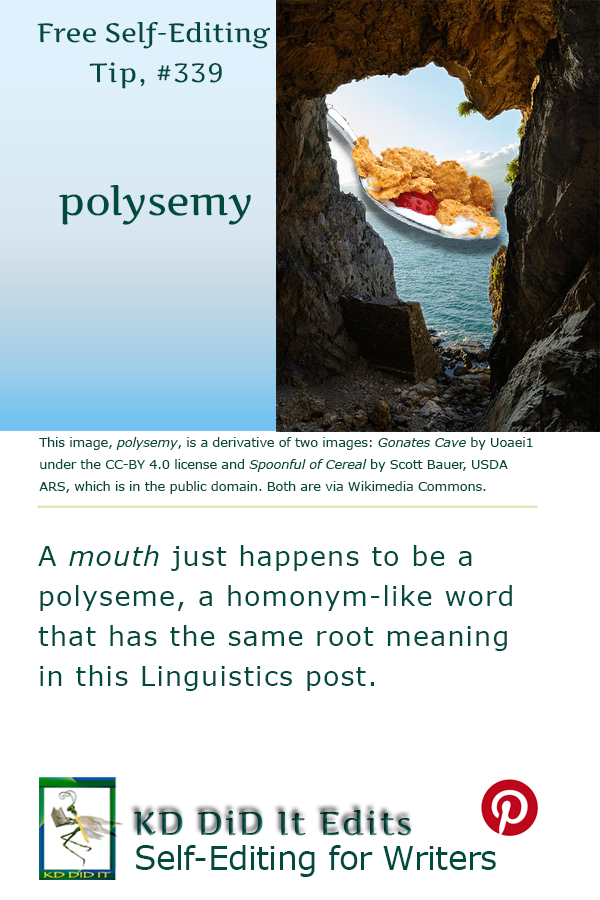Revised as of
7 Mar 2023
Polysemy is a type of linguistic word play in which words are spelt the same and may sound the same or different. The distinction comes in its etymological meaning, its basic root word.
Polysemies are a subset under homographs, which is itself a subset under homonym (see Table 1 below).
If each meaning of the word goes back to its root meaning, then it’s polysemic. Otherwise go have a look at “Monosemy” (only one meaning).
If you break polysemy apart:
Poly- means many, much
-semy is from sēma and means sign
To decide if a word is polysemic or a homonym, look it up in the dictionary. If the dictionary states that it has the same root or a shared etymology, it’s polysemy. Of course, there are always going to be some exceptions.
Linguistics is . . .
. . . the systematic study of the nature, structure, and variation of language (of which grammar is a part), which describes how people use language. For the writer, how words are used (or spelled!) determines a character’s social and educational level and the time period for the story.
As I discover more examples, also-known-ases, and additions, I’ll update this post. If you have a suggestion, I would appreciate you contacting me. If you found this post on “Polysemy” interesting, consider subscribing to KD Did It, if you’d like to track this post for future updates.
C’mon, get it out of your system, bitch, whine, moan . . . which words are your pet peeves? Also, please note that I try to be as accurate as I can, but mistakes happen or I miss something. Email me if you find errors, so I can fix them . . . and we’ll all benefit!
Satisfy your curiosity about other Linguistics posts by exploring its homepage or more generally explore the index of self-editing posts. You may also want to explore Book Layout & Formatting Ideas, Formatting Tips, Grammar Explanations, the Properly Punctuated, Word Confusions, Writing Ideas and Resources, and Working Your Website.
Resources for Polyseme
Schiller, Rebeca. “Homonym, Homophone, Heterograph, Heteronym, Polyseme, and Capitonym, Oh My!” Rebeca Schiller.com. 6 Jan 2012. Web. 29 Sept 2016. <http://www.rebecaschiller.com/linguistics/homonym-homophone-heterograph-heteronym-polyseme-and-capitonym-oh-my/>.
Pinterest Photo Credits:
Gonates Cave at the bay of Plakias, Crete, is Uoaei1’s own work under the CC BY-SA 4.0 license and Spoonful of Cereal by Scott Bauer, USDA Agricultural Research Service, is in the public domain. Both are via Wikimedia Commons.


